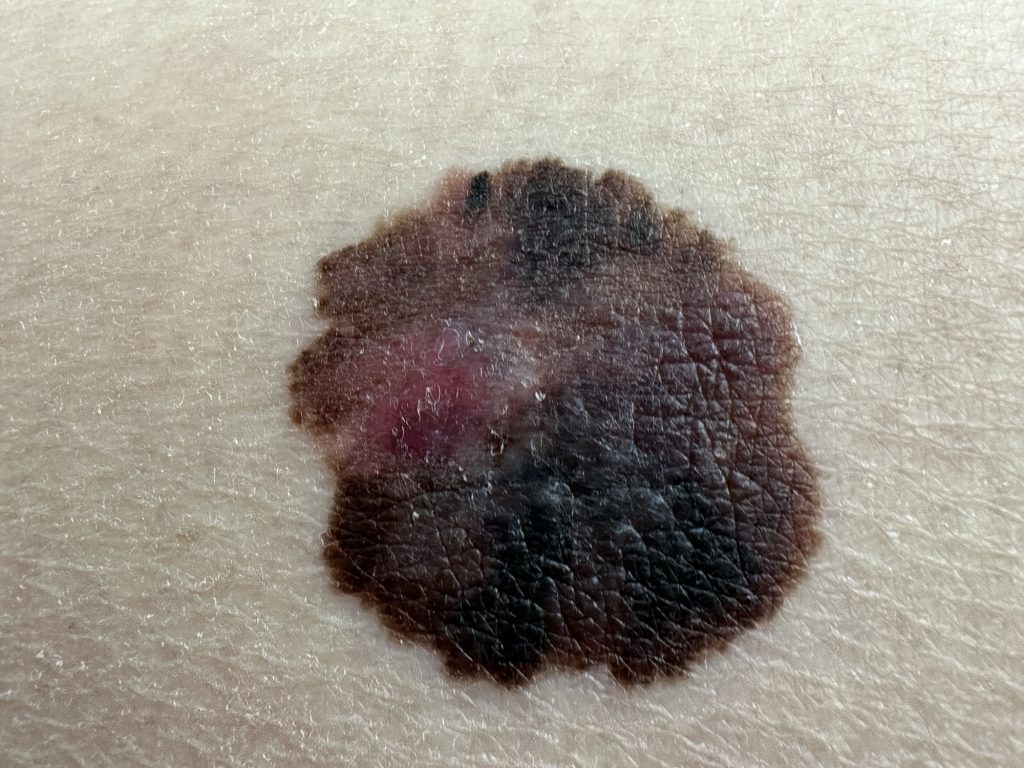Castle’s DecisionDx-Melanoma, a 31-gene expression profile (GEP) test, can identify patients at risk of developing early distant metastases (DM) to the central nervous system (CNS), lung, liver, and bone and can guide risk-appropriate surveillance strategies, potentially improving survival outcomes.
This is the main takeaway from a poster presented at the 2025 American Association for Cancer Research (AACR) Annual Meeting in Chicago, IL.
Up to 20% of patients with stage I-II cutaneous melanoma (CM) will develop DMs, with the most frequent DM sites being the liver, lungs, bone, and brain. Although patients who develop DM have poor prognoses, trials of new immunotherapies in patients with DM have reported 5-year survival rates as high as 50%, and early detection of DM when tumor burden is lower tends to lead to better treatment responses.
Researchers had previously shown that DecisionDx-Melanoma can catch patients at risk for DMs to the central nervous system (CNS), and the new study expands on these results.
Retrospective Analysis
For the study, researchers conducted a retrospective analysis of 1,661 patients with American Joint Committee on Cancer (AJCC) stage I-II CM clinically tested with Castle’s 31-GEP from 2013-2017. The DecisionDx-Melanoma test provides a risk score for melanoma recurrence and/or metastasis within 5 years. This score is categorized into risk classes: 1A (lowest risk), 1B/2A (increased risk), and 2B (highest risk).
Differences in DM rates between groups were assessed, and survival estimates (DM-free survival, DMFS) were estimated.
Among patients with stage I-II CM, a total of 90 DMs developed in 67 (4.0%) patients to the liver (n=48), lung (n=22), and/or bone (n=20). A higher percentage of patients with Class 2B than Class 1A developed DM to the liver (7.4% vs. 1.2%), lung (4.5% vs. 0.6%), and bone (3.0% vs. 0.8%), the study found. A 31-GEP Class 2B result was associated with significantly lower 5-year DMFS than Class 1B/2A or Class 1A for liver (91.7%, 92.2%, vs. 98.9%), lung (95.0%, 97.6%, vs. 99.4%), and bone (96.4%, 98.0%, vs. 99.2%). Of those with DM, the median time to develop DM (Class 1A, 1B/2A, vs. 2B) was 2.43, 2.22, vs. 2.27 years for liver; 1.74, 3.20, vs. 1.10 years for lung; and 3.2, 2.05, vs. 1.30 years for bone.
“Among patients with stage I-II CM, a greater percentage of those with a Class 2B 31-GEP developed DM at all studied sites, and five-year DMFS was significantly lower for those with a Class 2B result,” the researchers report. “Including 31-GEP testing with AJCC staging can allow clinicians to identify patients at higher risk of DM and recommend risk-appropriate surveillance modalities and frequency for early detection and treatment of DM.”


